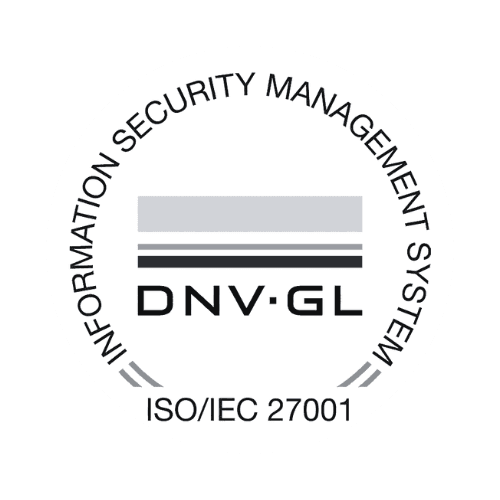Nichts verpassen & anmelden:
Written by AI
SaaS Pricing for Large Customers: Strategies for the Optimal Price
Pricing SaaS products for enterprise customers is a complex task. It requires an understanding of SaaS pricing as well as the specific needs of enterprise customers. In this article, we will explore the fundamentals of SaaS pricing, the factors influencing SaaS product pricing, and different pricing strategies for SaaS products. Furthermore, we will focus on pricing SaaS products for enterprise customers and avoid common mistakes.
Understanding SaaS Pricing
Fundamentals of SaaS Pricing
To understand the pricing of SaaS products for enterprise customers, it is essential to know the basics of SaaS pricing. Various models are often used in SaaS pricing, including the pay-as-you-go model, the usage model, and the subscription model. Enterprise customers often prefer the subscription model as it allows them to better plan costs and gain access to the product.
Differences in Pricing for Different SaaS Products
Not all SaaS products are alike, and therefore there are differences in pricing. Some SaaS products are more industry-specific and require a specific pricing structure, while others are more general. When pricing SaaS products, factors such as development costs, scalability, competition, and price elasticity must be considered.
Another important aspect of SaaS pricing is flexibility for customers. Many SaaS providers offer different packages and options to meet the diverse requirements and budgets of their customers. This can help strengthen customer loyalty and increase customer satisfaction.
The Role of Data Analysis in SaaS Pricing
Data analysis plays a crucial role in pricing SaaS products. By analyzing usage data, customer feedback, and market trends, SaaS providers can optimize their pricing and remain competitive. Continuous monitoring and adjustment of the pricing strategy based on data is essential to ensure long-term success.
Factors Influencing the Pricing of SaaS Products
Costs of Developing and Maintaining SaaS Products
An essential factor in pricing SaaS products is the cost of development and maintenance. Developing a SaaS product requires a significant investment in technology, infrastructure, and personnel. These costs must be included in the pricing to ensure that the business remains profitable.
Value of the SaaS Product to the Customer
Another critical factor in pricing SaaS products is the value of the product to the customer. Companies are willing to pay more for a product that offers them high value and improves their business processes. Therefore, it is important to understand the value of the SaaS product to the customer and incorporate it into the pricing.
An additional aspect that influences the pricing of SaaS products is market demand. The demand for specific features or services can affect prices. If a particular feature is in high demand and offers significant value to customers, it may lead to an adjustment in the price of the SaaS product accordingly.
Scalability and Flexibility of the SaaS Product
The scalability and flexibility of a SaaS product are crucial factors that influence pricing. Companies often need scalable solutions that can grow with them without drastically increasing costs. A flexible SaaS product that allows customers to use only the features they need can also impact the price, as customers are willing to pay more for tailored solutions.
Pricing Strategies for SaaS Products
Usage-based Pricing
A common pricing strategy for SaaS products is usage-based pricing. Companies offer various pricing plans based on the product's usage, such as the number of users or the amount of resources consumed. This allows companies to remain flexible and adjust their prices based on actual usage.
Usage-based pricing gives customers the opportunity to adjust their spending according to their actual usage. Companies can thus ensure that customers only pay for the resources they actually need, resulting in fair and transparent pricing.
Feature-based Pricing
Another pricing strategy for SaaS products is feature-based pricing. Here, companies offer different price tiers that include various features and functionalities. Customers can then choose the pricing tier that best suits their needs based on the features they require.
Feature-based pricing allows customers to choose exactly the features that meet their requirements, thus saving costs by not paying for unnecessary features. Companies can also target customers who particularly value specific features and are willing to pay more for them through this differentiated pricing.
SaaS Pricing for Enterprise Customers
Understanding the Needs of Enterprise Customers
To effectively price SaaS products for enterprise customers, it is vital to understand their needs. Enterprise customers often have specific requirements and expect a high level of support and flexibility. Therefore, companies must adjust their pricing and services accordingly.
Adjusting Pricing for Enterprise Customers
When pricing for enterprise customers, companies must consider various factors. These include the size of the company, the product's value to the business, internal budgets, and competition. Companies should also offer various pricing models such as annual contracts or tailored solutions to meet the needs of enterprise customers.
Another important aspect of pricing SaaS products for enterprise customers is transparency. Companies should provide clear and understandable pricing structures to avoid misunderstandings and build customer trust. This can help establish long-term relationships and increase customer satisfaction.
Integrating Feedback into Pricing
Companies should continuously gather and evaluate feedback from their enterprise customers regarding pricing. By responding to feedback and making adjustments as necessary, companies can ensure that their prices are fair and competitive. This proactive approach shows customers that their input is valued and strengthens the bond between companies and customers.
Avoiding Common Mistakes in SaaS Product Pricing
Over- or Undervaluing SaaS Products
One of the most common mistakes in pricing SaaS products is over- or undervaluing the product. If a product is too expensive, companies may be unwilling to pay for it. However, if it is too cheap, customers may question the product's value. Therefore, it is important to find the right price for the SaaS product that is fair for both the company and the customer.
Not Considering Competition in Pricing
Another mistake is not considering competition when pricing. Companies need to analyze their competitors and take their prices into account to remain competitive. If a company sets its prices too high, customers may switch to cheaper alternatives. Conversely, too low prices could lead to a loss of value and lack of profitability.
Overall, pricing SaaS products for enterprise customers is a challenging task. It requires a solid understanding of SaaS pricing, the needs of enterprise customers, as well as various factors that can influence pricing. By applying appropriate pricing strategies and avoiding common mistakes, companies can successfully market SaaS products for enterprise customers.
Another aspect that should be considered in pricing SaaS products is the flexibility of pricing models. Companies should offer various pricing models to meet the diverse needs of their customers. Some customers may prefer a monthly subscription, while others may wish for an annual payment option. By offering different pricing models, companies can expand their customer base and increase customer satisfaction.
In addition to the flexibility of pricing models, it is also important to consider customer loyalty. Companies should create incentives to retain and reward existing customers. This can be achieved through loyalty programs, discounts for long-term contracts, or exclusive access to new features and upgrades. Customer loyalty is crucial for the long-term success of a SaaS product, as satisfied and loyal customers tend to recommend the product and build lasting business relationships.








